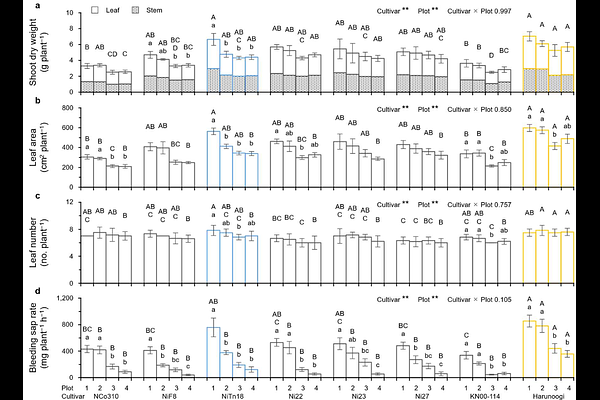Root Water Uptake and Photosynthesis Synergistically Enhance Drought Tolerance in Interspecific Hybrid Sugarcane

Root Water Uptake and Photosynthesis Synergistically Enhance Drought Tolerance in Interspecific Hybrid Sugarcane
Katsuhama, N.; Tamaru, S.; Yabuta, S.; Yamori, W.; Sakagami, J.-I.
AbstractSugarcane (Saccharum spp. hybrids) is a globally important crop for food and bioenergy, but its production is increasingly threatened by drought driven by climate change. Drought causes complex interactions between root function and leaf photosynthesis, but their underlying mechanisms remain largely unstudied in sugarcane. To address this knowledge gap, we grew up to eight sugarcane cultivars in one field and two pot experiments inside a rain-out shelter. The relative growth rate of these eight cultivars under both well-watered and water-limited conditions was largely explained by net assimilation rate, which depended on bleeding sap rate caused by root pressure. Among the cultivars, Harunoogi--a first-generation backcross cultivar between a wild relative (S. spontaneum) and a commercial cultivar--exhibited improved drought avoidance through adequate root water supply, whereas the commercial cultivar NiTn18 showed the opposite. Throughout the drought and recovery, Harunoogi exhibited significantly higher leaf area, stomatal conductance, chlorophyll content, and maximum amplitude of the reaction center chlorophyll of PSI than cultivar NiTn18, which resulted in a higher net photosynthetic rate and biomass. These results highlight the potential of improving both root function and photosynthesis as an effective approach to developing drought-tolerant sugarcane.